Autumn colour in the trees, and much cooler temps is finally heralding the change of season.
And it’s well under way up in Mount Wilson for this weekend’s Garden Clinic Gathering. It’s a great time to be in the Blue Mountains, and a great season for gardening. So let’s get into it.
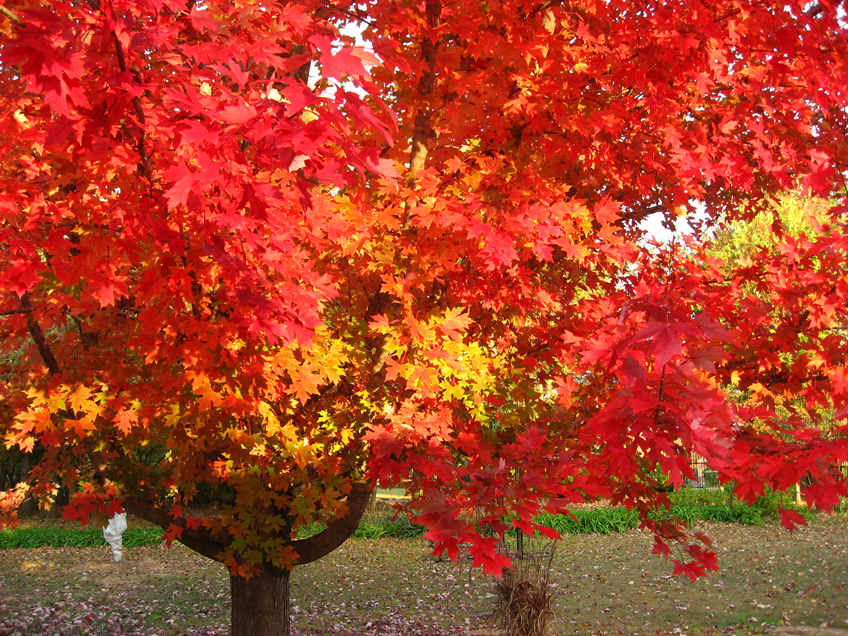
Autumn is finally showing us it's true colours. Acer rubrum 'October Glory' aflame in Mount Wilson right now.
On top of the stunning autumn colour in the Blue Mountains it’s apple harvest time in Bilpin this weekend and TNT Orchard will let you pick your own bag-full
of the best pink lady apples you’ve ever had.
To find TNT orchard head up the Bell’s Line of Road to Bilpin. Turn left on Kurts Road after the fruit bowl. TNT is at number 153 Kurts Road, and don’t
forget to tell them Graham sent you.
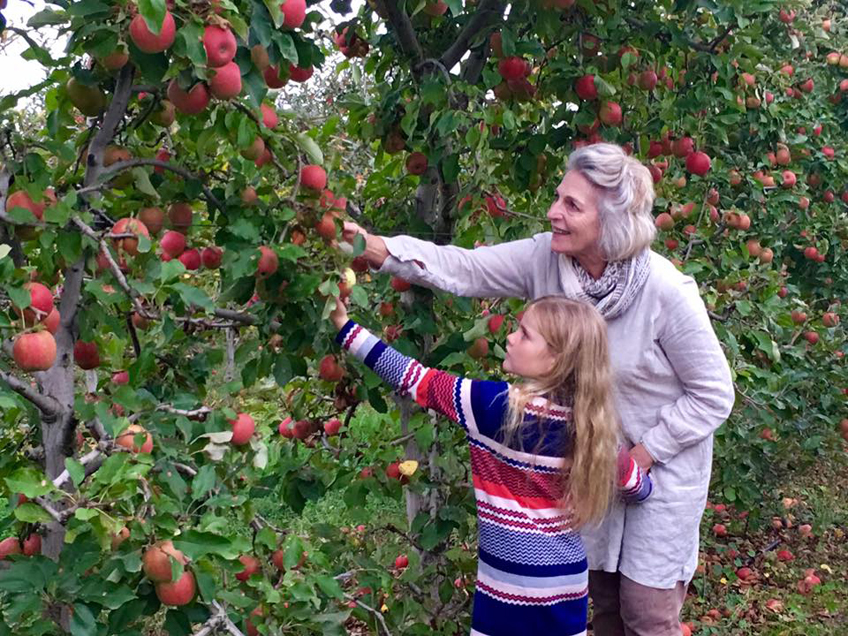
How do you like them apples? Sandra and Melaleuca at the TNT Orchard, Bilpin. Photo - Linda Ross
Its Time To:
Admire
The delicate sway of Japanese windflowers (Anenome) intoxicates us in autumn. Tones of white, lilac and pink match nicely with the purple tones
of Plentranthus ecklonii and Plectranthus ‘Mona Lavender’.
Rake
Collect autumn leaves to make a nutritious leaf mulch for acid-loving plants such as camellias, azaleas and gardenia. Fill a black plastic bag with leaves
and add a handful of blood and bone. Moisten the mix then tie it off and leave it to brew for 5-6 months. Spread mulch over beds in summer.
Make tea
Pick leaves of lemon-scented myrtle (Backhousia citriodora) and infuse in boiling water for a few minutes. Sip hot, or chill and pour over ice.
Feed
Fertilise citrus trees with a mix of compost, cow manure and powdered rock minerals.
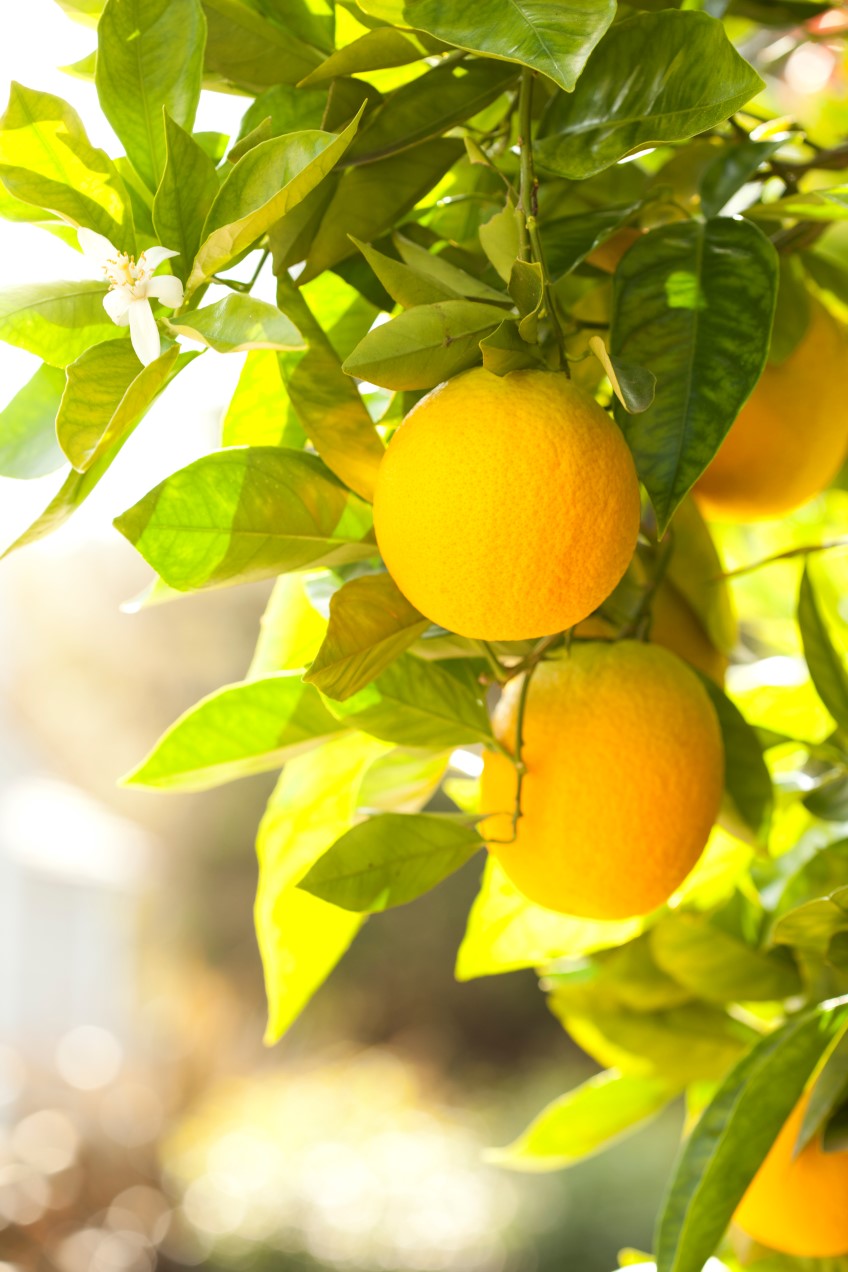
Citrus need a good feed at the begining of every season
Divide
Clumping perennials such as salvia, yarrow (Achillea) and gaura can be divided once they have finished flowering. Share the excess with friends
or repeat groupings through the garden.
Strappy-leafed plants such as liriope, kangaroo paw, agapanthus and clivia can also be divided now. Dig up, divide, soak in seaweed solution, prune off
leaves, then replant, spacing plants at correct spacings.
Trim
Deadhead roses, perennials and dahlias to prolong flowering.
Plant
Buy tubestock to create a new native wildflower garden to love in spring. We’ve found its cheaper and more effective to buy smaller pot sizes as the plants
grow faster.
The Bush Garden:
Lilly Pilly ‘Cascade’
Cascade is one of my favourites. It's a cross between Syzygium leuhmanii and S. wilsonii. A beautiful small shrub with mid-sized glossy
apple green leaves with attractive red and pink new growth. Spectacular pink powder-puff flowers in summer are followed by pinkish fruits that are
edible and attract birds.
Cascade has a lovely weeping habit, with many flushes of coloured new growth, and has a thick bushy habit. A great feature, screen, hedge or topiary plant
that is also good for pots. It responds well to pruning, and is attractive left to grow naturally. Good for sun to part shade in most soil types. Best
of all, it’s tolerant of light frosts, and psyllid resistant.
For more information go to Gardening with Angus.
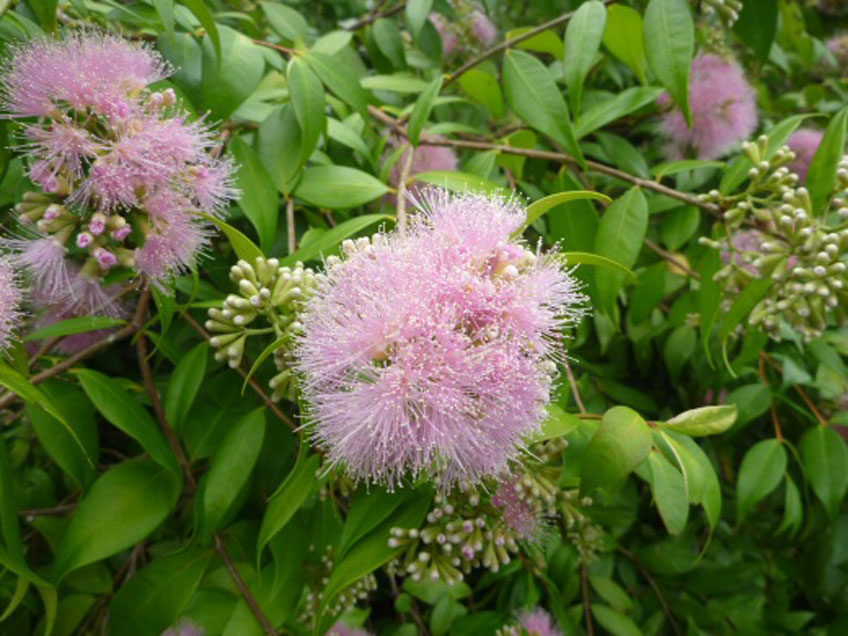
Lilly Pilly 'Cascade'. Photo - Angus Stewart
Callistemon viminalis ‘Hannah Ray’
A small tree, growing 4-5m tall, usually with several trunks then weeping branches and branchlets. New leaf growth in spring is coloured pink becoming
dark green with age.
Flower spikes are bright red, smaller than most bottlebrush but compensated by the huge volume of flowers produced mainly in spring but spasmodically at
other times of the year. Flowers are attractive to nectar feeding birds, insects and bees.
Very hardy, growing happily in sandy and clay soils from the coast to inland even near watercourses.
Drought resistant and free of insect pests.
Ideal as a small street tree, shade tree in a courtyard or for screening along a fence line. Has also been used for bonsai culture.
I think the varietal name maybe a contraction of a family member of the legendary horticulturist/nurseryman, Walter Hazlewood (1885-1980), ‘Hannah’, and
‘Ray’ Road, Epping, where they lived. But if you know better I’d be delighted to have any confirmation or correction to this.
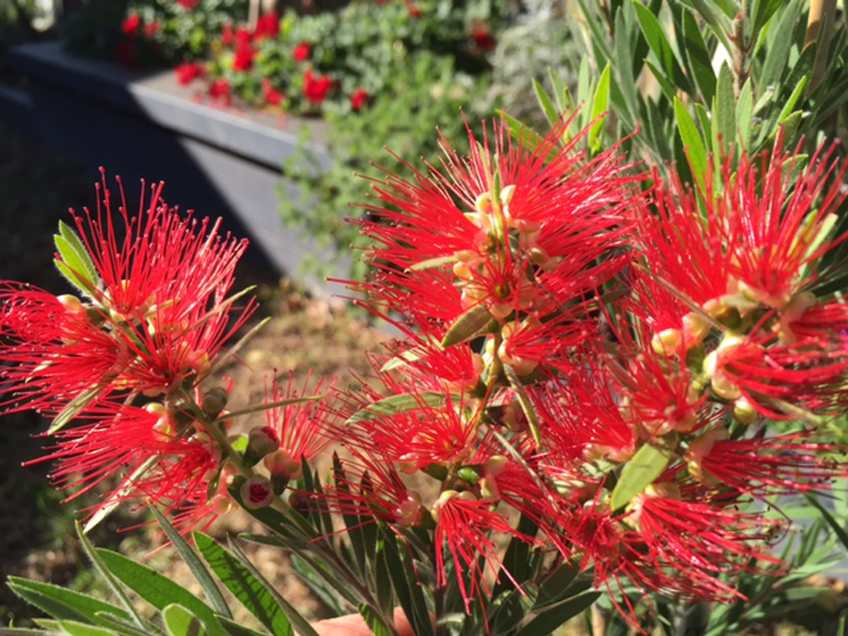
The weeping bottle brush, Callistemon viminalis 'Hannah Ray'. Photo - Graham Ross
Bugwatch:
Mites
Mites are not what they seem. Unlike other insects mites are classified in the subclass Acari, along with ticks.
As such, many pesticides will not be effective controlling them. Many years ago a gardening program on the radio would have recommended using a miticide.
But we don’t advise using them anymore because they cause cancer.
But there are a number of effective controls. OCP has a range of beneficial insects available called Backyard Buddies that can be released into your garden to combat mites and insects.
Backyard Buddy, 'Pete' is a predatory mite (Phytoseiulus persimilis) which has been used for many years as a natural way to control various mites (especially two-spotted
mites) in gardens and commercial crops. Both juvenile and adult 'Petes' feast on troublesome mites. Adults are fast moving and a distinctive orange
colour.
Alternatively, a program of spraying with Yates Natures Way Veg & Herb Spray with Natrasoap, Eco-neem and Eco-oil will impact on the number of mites and stop them multiplying. Keep the spray up until the cool weather arrives
and the mites should move on.
In the Veggie Patch:
Sowing time has nearly finished in my veggie patch. The kids have got their winter veg in, like carrots, cauliflower, cabbage, leaks spring onions, beets,
and loads more.
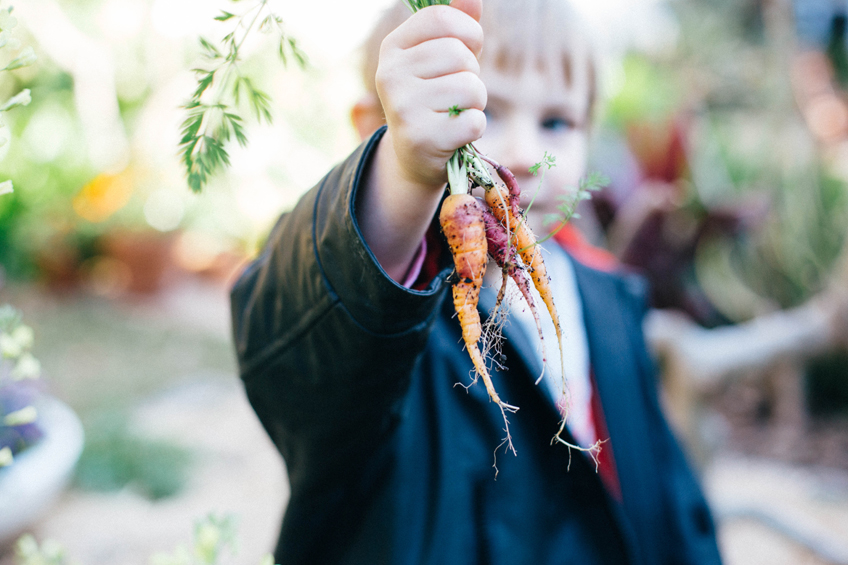
Flinders just loves carrots! Photo - Hannah MacCowatt
Broccoli and broccolini needs to go in now. We like broccolini because it’s less susceptible to aphids, it is more tender to eat (stalks and all) and it
is possible to cut and come again.
Peas are up in my garden. A fantastic crop that will fix nitrogen in the soil as it grows. Give them support like string or stakes and get them in the
ground.
As I always say, for freshness and taste nothing beats home-grown veggies.So get out there with your little gardeners and plant out a veggie patch this
weekend.
Come away with us:
Garden Marlborough with Michael McCoy
New Zealand’s gardens are amongst the best anywhere on earth. Throw in a warm kiwi welcome and Garden Marlborough, we have the perfect excuse to visit
this beautiful region of the south island when the peony and wisteria are just heavenly.
Join Michael McCoy and see the best of New Zealand including: Christchurch Botanic Garden, Linton Giant House & Artists Garden, East Coast Garden tour,
Urban Tour, Queen Charlotte Sound Cruise, Hortensia House, Hans Herzog Winery
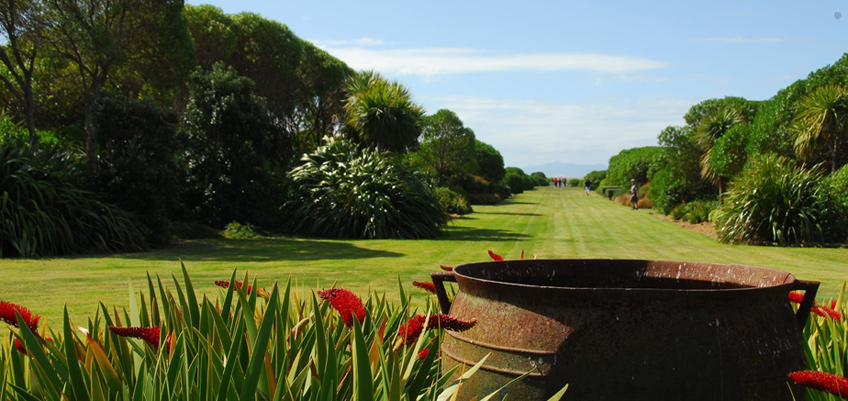
One of the many spectacular gardens you will see on the Marlborough tour this year
For more information on this incredible tour go to the Ross Tours website, or call Royce or Roslyn at Ross Tours to reserve your place on 1300 233 200 for more details on the tour.
Garden News:
Historic Strickland House Open Day
One of my favourite historic houses in Sydney will be open this Sunday.
Situated at 52 Vaucluse Road, Vaucluse, Strickland House is an imposing house, built in 1854-6, overlooking Sydney Harbour. Its extensive grounds and gardens
are open to the public during daylight hours every day. But this Sunday the annual open day will see the house itself also open to the public.
The grounds give access to two small harbourside beaches and the Hermitage Harbour Walk, which runs from Rose Bay to Watsons Bay. There are great views
of Sydney Harbour overlooking Shark Island.
Stricland House will be open Sunday May 1 between 10am – 4pm.

Strickland House open this Sunday May 1. Photo - pearlcatering.com.au
A chat with Des Boorman
Des Boorman, B. App. Sc. (Hort. Tech.), is the Business & Technical Support Officer (BTSO), with the Nursery & Garden Industry National Association
(NGINA) – Tweed-Brunswick & Northern Rivers. Des joined me on the show for a chat about weeds and biosecurity, and in particular, the NSW Biosecurity
Act 2015 – Development of Supporting Regulation.
The passage of this piece of legislation through the NSW Parliament last year provided NSW with a unique opportunity to review biosecurity risks with regards
to introduced weeds in the past and how we can better manage the problem into the future.
But despite this opportunity Des told me that it’s still unclear to the NGINA how the Noxious Weed Act 1993 (which prevents home gardeners and the
nursery industry from introducing dangerous weeds into the environment ) will be transferred into the new Act, what the noxious weed listings will
be and the mechanisms included to address current issues.
Des and the NGINA believe that the effectiveness of this Act will depend on industry compliance with it. The NGINA continue to work with the State Government
of NSW and with the nursery industry to minimise the risk of introduced weeds in ornamental home gardens, and to clarify how the new act will address
complexity with regards compliance for the industry and for gardeners alike.
MONA on the mainland: 'The Cedars' to become cultural centre
Federal Arts Minister Mitch Fifield announced last week that new funding for the Adelaide Hills home and studio of renowned landscape painter Sir Hans
Heysen could one day lead to a MONA-style cultural centre on the site.
The idyllic property known as The Cedars is currently a museum dedicated to the artist's life and work, and will receive $1 million from the Federal Government
to be spent on its upkeep.
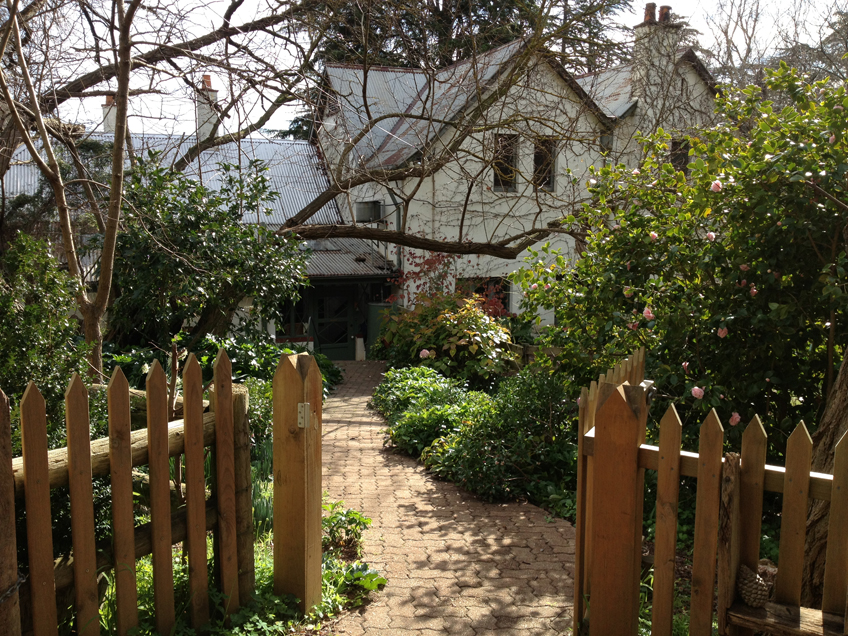
Historic house and garden, 'The Cedars'. Photo - Graham Ross
The grant is the culmination of more than three years work by the Hans Heysen Foundation, which was set up by the artist's grandson Peter Heysen, to secure
the site's long-term security.
The Mount Barker District Council has more than matched the Government funding, committing $1.5 million, with other contributions from private and corporate
donors.
The Cedars is set on a hillside outside Hahndorf and was the home of Heysen and his family, including daughter and artist Nora Heysen, for more than half
a century.